Table of Contents
Welcome to Kizworld, your ultimate destination for unlocking the secrets of parkour mastery. Discover The best parkour exercises and drills that will transform you into a movement artist. Our comprehensive guide caters to all levels, from aspiring beginners to seasoned traceurs. Get ready to elevate your skills, conquer obstacles, and redefine your limits. Unleash your inner athlete and embark on an exhilarating journey of physical prowess and self-discovery.
The Best Parkour Exercises and Drills to Master Your Moves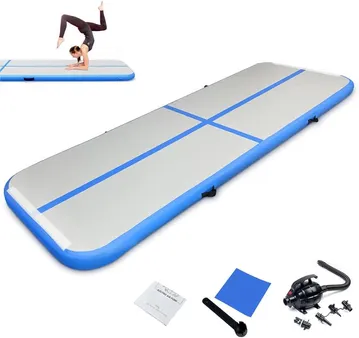
I. The Best Parkour Exercises for Beginners
The Best Parkour Exercises for Beginners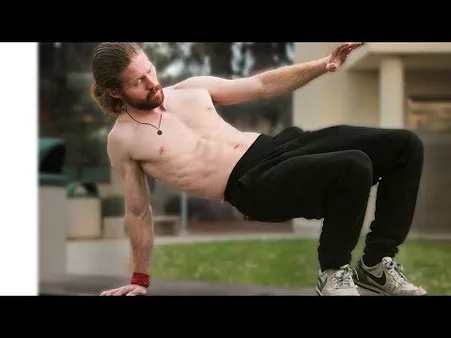
Mastering the Basics: Essential Parkour Drills for Newcomers
Embark on your parkour journey with a solid foundation by mastering these fundamental exercises. These drills will introduce you to the core movements and techniques that form the basis of parkour, building your confidence and preparing you for more advanced challenges.
- Precision Jumps: Develop accuracy and control as you navigate obstacles with precision jumps. Start with low obstacles and gradually increase the height as you gain confidence.
- Wall Runs: Learn to propel yourself up walls using momentum and technique. Begin with short walls and progress to higher ones as your strength and agility improve.
- Tic-Tacs: Master the art of transitioning smoothly between obstacles with tic-tacs. Practice on low walls or benches before attempting them on higher structures.
Building Strength and Agility: Foundational Exercises for Parkour Athletes
Enhance your physical capabilities with these exercises that target the strength, agility, and coordination essential for parkour. Incorporate them into your routine to improve your overall performance and reduce the risk of injuries.
Exercise | Benefits | How to Perform |
Squats: | Builds lower body strength and power. | Stand with feet shoulder-width apart, lower your body by bending your knees and hips, keeping your back straight. Return to the starting position. |
Push-Ups: | Develops upper body strength and endurance. | Place your hands shoulder-width apart on the ground, slightly wider than your shoulders, and lower your body until your chest almost touches the ground. Push back up to the starting position. |
Lunges: | Improves balance and leg strength. | Step forward with one leg and bend both knees, lowering your body until your back knee is close to the ground. Push back up to the starting position and repeat with the other leg. |
Plank: | Strengthens core muscles and improves stability. | Hold a position with your forearms on the ground, body in a straight line from head to heels, and toes tucked. |
Burpees: | Boosts cardiovascular fitness and全身力量. | Start standing, drop down into a squat position, place your hands on the ground in front of you, kick your feet back into a plank position, do a push-up, jump your feet back to your hands, stand up, and jump, reaching your arms overhead. |
Safety First: Essential Guidelines for Parkour Training
Prioritize safety by following these guidelines during your parkour training. Minimize the risk of injuries and create a positive and enjoyable learning environment.
- Warm Up Properly: Prepare your body for the physical demands of parkour with a dynamic warm-up routine that includes stretching and light exercises.
- Choose Appropriate Training Locations: Select safe and suitable training areas with adequate space, soft landing surfaces, and minimal obstacles.
- Start Small and Progress Gradually: Begin with basic movements and gradually increase the difficulty as your skills and confidence grow.
- Train with a Spotter: Work with a partner who can provide assistance and support during challenging maneuvers.
- Listen to Your Body: Pay attention to your physical limits and take breaks when needed. Avoid pushing yourself beyond your capabilities.
By following these guidelines, you can create a safe and productive training environment that supports your parkour journey.
Related Posts: How to Do a Handstand, The Benefits of Gymnastics for Kids, The Best Gymnastics Equipment for Home Use
II. Parkour Drills to Improve Your Skills
Parkour Drills to Improve Your Skills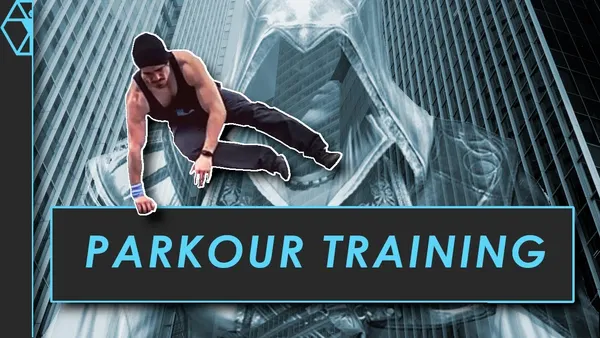
Mastering the Basics: Essential Drills for Beginners
As a beginner in parkour, it's crucial to establish a solid foundation of basic skills. Start with simple drills that focus on developing your balance, coordination, and body control. These drills will help you build the confidence and technique necessary to progress to more advanced movements.
- Balance Drill: Practice standing on one leg for extended periods, gradually increasing the duration as you improve.
- Coordination Drill: Perform jumping jacks or high knees while simultaneously clapping your hands.
- Body Control Drill: Try the "plank hold" by holding a push-up position for as long as possible.
These drills may seem simple, but they lay the groundwork for more complex parkour techniques. Consistency and repetition are key to mastering these foundational skills.
Intermediate Drills: Building Strength and Agility
Once you've gained proficiency in the basic drills, it's time to challenge yourself with intermediate drills that focus on building strength, agility, and speed. These drills will help you overcome obstacles and execute more dynamic movements.
- Box Jumps: Start with a low box and gradually increase the height as you progress. Focus on jumping onto the box with both feet and landing softly.
- Wall Runs: Find a sturdy wall and practice running up it for a short distance. Start slowly and gradually increase the height of your runs.
- Precision Jumps: Set up cones or markers at varying distances and practice jumping over them with accuracy and control.
These drills will not only improve your physical abilities but also enhance your mental focus and problem-solving skills.
Advanced Drills: Pushing Your Limits
For experienced parkour practitioners, advanced drills offer an opportunity to refine their skills and push their limits. These drills require a high level of strength, agility, and coordination, and should only be attempted after mastering the basics and intermediate drills.
- Kong Vault: This challenging move involves jumping over an obstacle while grabbing a horizontal bar and swinging your legs over.
- Cat Leap: This dynamic move requires you to jump over an obstacle while tucking your knees and landing softly.
- Backflip: The ultimate test of skill and control, the backflip involves flipping your body backward while maintaining balance and landing safely.
Advanced drills like these require dedication, practice, and a commitment to safety. Always warm up properly and use spotters when attempting new and challenging moves.
Whether you're a beginner, intermediate, or advanced parkour practitioner, these drills will help you improve your skills, overcome obstacles, and achieve your parkour goals. Remember to start slowly, focus on technique, and always prioritize safety.
To further enhance your parkour training, consider joining a parkour gym or class. These facilities provide a safe and supportive environment to learn and practice parkour under the guidance of experienced instructors. You can also find valuable resources and tips on parkour forums and online communities.
With dedication, perseverance, and a commitment to safety, you can master the art of parkour and unlock your full potential as a traceur or traceuse.
Related posts: How to Do a Handstand, The Benefits of Gymnastics for Kids, The Best Gymnastics Equipment for Home Use
III. Advanced Parkour Exercises for Experienced Traceurs
Advanced Parkour Exercises for Experienced Traceurs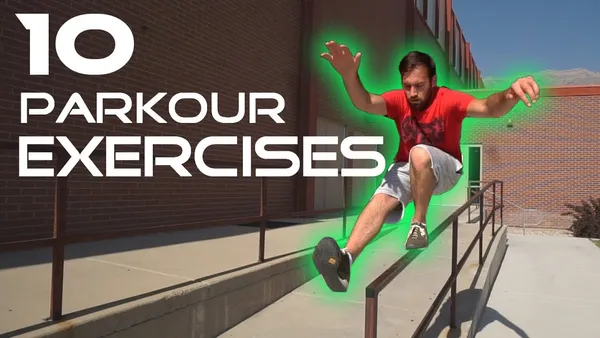
As you progress in your parkour journey, it's time to elevate your skills with advanced exercises that challenge your physical and mental abilities. These drills will push your limits, helping you become a more versatile and confident traceur.
Before attempting these exercises, ensure you have mastered the fundamental parkour movements and techniques. Always prioritize safety by warming up properly and practicing in a controlled environment with adequate supervision.
1. Precision Jumps:
Enhance your accuracy and control with precision jumps. Start by jumping over small obstacles, gradually increasing the height and distance as you gain confidence. Focus on landing softly and maintaining balance throughout the jump.
Related Post: How to Do a Precision Jump
- Start with low obstacles and gradually increase the height and distance.
- Focus on landing softly and maintaining balance.
- Practice jumping over different types of obstacles, such as walls, benches, and rails.
2. Wall Runs:
Master the art of wall runs to overcome vertical obstacles with speed and agility. Approach the wall at an angle, plant your feet firmly, and push off powerfully to propel yourself upwards. Practice different variations, such as the basic wall run, the speed wall run, and the kong vault.
Related Post: How to Do a Wall Run
- Start with low walls and gradually increase the height as you gain confidence.
- Focus on maintaining a strong grip and pushing off powerfully with your legs.
- Practice different variations of the wall run, such as the basic wall run, the speed wall run, and the kong vault.
3. Cat Leaps:
Develop your agility and coordination with cat leaps. Start by jumping over low obstacles, gradually increasing the height and distance as you progress. Focus on maintaining a low profile and using your arms and legs to propel yourself forward.
Related Post: How to Do a Cat Leap
- Start with low obstacles and gradually increase the height and distance.
- Focus on maintaining a low profile and using your arms and legs to propel yourself forward.
- Practice cat leaps over different types of obstacles, such as walls, benches, and rails.
4. Flips:
Take your parkour skills to the next level with flips. Start with basic flips like the front flip and back flip, gradually progressing to more advanced variations such as the side flip and the gainer. Practice these flips in a safe environment with proper supervision.
Related Post: How to Do a Flip
- Start with basic flips like the front flip and back flip.
- Gradually progress to more advanced variations such as the side flip and the gainer.
- Practice flips in a safe environment with proper supervision.
5. Kong Vaults:
Challenge yourself with the kong vault, a dynamic move that combines a wall run and a precision jump. Approach the wall at an angle, plant your feet firmly, and push off powerfully to propel yourself upwards. As you reach the top of the wall, extend your legs and arms forward, landing softly on the other side.
Related Post: How to Do a Kong
- Start with low walls and gradually increase the height as you gain confidence.
- Focus on maintaining a strong grip and pushing off powerfully with your legs.
- Practice the kong vault over different types of obstacles, such as walls, benches, and rails.
Remember, safety is paramount in parkour. Always warm up properly, practice in a controlled environment, and seek guidance from experienced traceurs. With dedication and perseverance, you can master these advanced exercises and elevate your parkour skills to new heights.
IV. Safety Tips for Parkour Training
Safety Tips for Parkour Training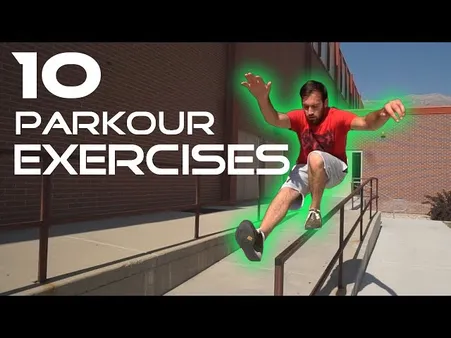
Always Warm Up Before Training
Warming up your muscles before parkour training is essential to prevent injuries. Dynamic stretches, such as leg swings and arm circles, are ideal for warming up the body and preparing it for the demands of parkour.
- Dynamic stretches are more effective than static stretches for warming up.
- Hold each stretch for 10-15 seconds.
- Repeat each stretch 2-3 times.
Wear Appropriate Clothing and Footwear
Wearing the right clothing and footwear is important for safety and comfort during parkour training. Loose, comfortable clothing that allows for freedom of movement is ideal. Footwear should provide good support and traction.
- Avoid wearing clothing that is too tight or restrictive.
- Choose footwear with good ankle support and a non-slip sole.
- Make sure your clothing and footwear are clean and in good condition.
Train in a Safe Environment
Choosing a safe environment for parkour training is crucial to minimize the risk of injuries. Look for areas with soft surfaces, such as grass or mats, and avoid training on hard surfaces like concrete or asphalt.
- Inspect the training area for hazards such as broken glass or sharp objects.
- Make sure the area is free of obstacles that could cause injury.
- Train with a partner or group for added safety.
Start Slowly and Gradually Increase the Difficulty of Your Training
It is important to start slowly and gradually increase the difficulty of your parkour training to avoid injuries. Begin with basic movements and techniques, such as vaults and rolls, and work your way up to more advanced moves as you gain experience and confidence.
- Don't try to learn too much too quickly.
- Focus on mastering the basics before moving on to more advanced techniques.
- Be patient and persistent, and you will eventually achieve your goals.
Listen to Your Body and Take Breaks When Needed
It is important to listen to your body and take breaks when you need them. If you are feeling tired or sore, it is best to stop training and rest. Pushing yourself too hard can lead to injuries.
- Take breaks throughout your training session to rest and recover.
- Listen to your body and stop training if you are feeling pain.
- Make sure to get enough sleep and eat a healthy diet to support your training.
Learn How to Fall Safely
Learning how to fall safely is an essential skill for parkour athletes. This can help to prevent injuries in the event of a fall. There are a few key techniques to keep in mind when learning how to fall safely.
- Keep your body relaxed and loose.
- Tuck your chin to your chest.
- Roll your body to absorb the impact.
Use Spotters When Attempting New or Dangerous Moves
When attempting new or dangerous moves, it is important to use spotters. Spotters can help to catch you if you fall and prevent serious injuries. Make sure your spotters are experienced and know how to spot properly.
- Use spotters when attempting new or dangerous moves.
- Make sure your spotters are experienced and know how to spot properly.
- Communicate with your spotters and let them know what you are planning to do.